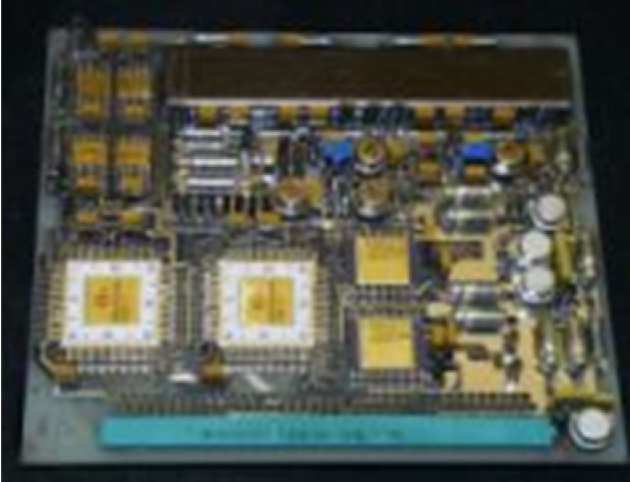Space instrumentation has to operate in hazardous high-radiation environments. Depending on a particular mission this may encompass solar and cosmic radiation as well as trapped high energy electron & proton belts in the vicinity of planetary bodies. The inability to replace hardware failures on satellites means very rigorous instrument design and component selection is needed to ensure reliability during the mission timeline.
Radiation Hardened Design
Semi-conductors are particularly prone to damage from radiation due to their very nature - small band gap materials operating with limited numbers of charge carriers. The effects of radiation in semi-conductors is a complicated subject but generally speaking three effects may be identified.
- Displacement Damage where the impact of high energy particle creates vacancy sites where recombination may occur reducing the device performance and may eventually result in a non operation.
- Ionisation damage where the impact of high energy particle results in electron-hole pair creation. In the case of powered MOSFETs electron diffusion can enhance conduction which can lead to permanent turn-on & associated high current consumption (known as 'latch up') resulting in device burn out and potential damage elsewhere.
- Other effects such as Single Event Upset which may cause a bit flip in RAM usually fixed by a power cycle.
The important parameter for assessing the radiation levels is the Total Ionising Dose (TID) which is calculated based on the radioactive fluence for a given orbit. For a given payload this figure will be modified according to the instrument location on the platform and adequate margin included to give an overall radiation figure. Once this has been determined appropriate components may be selected from the ESA or NASA PPLs (Preferred Parts List) or if a new device is needed a dedicated radiation test may take place.
 Options for dealing with radiation besides intelligent component selection include
Options for dealing with radiation besides intelligent component selection include
- Shielding: From an external box or spot shielding of particular components.
- Redundancy: Duplicated back-up sub-units and cross strapped interfaces.
- Watchdog: Dedicated circuits designed to monitor key parameters in-flight.
- Operational Constraints:Instrument switch offs in high flux regions
Image to the right shows the Cluster ADC board featuring Tantalum spot-shield built by Space Research Institute (Institut für Weltraumforschung) in Graz, Austria
Due to the relative importance of magnetic field measurements Imperial instruments have always been fully cross strapped featuring duplicated sub-units (including sensors) operating in cold redundancy. This of course protects against not just against radiation but mechanical failures due to launcher loads and/or thermal effects In addition careful design and rigorous testing of instrument operating systems is a necessity and embedded code is always written to ESA standards and patchable in-flight.
One of the particular challenges faced by space magnetometers is due of their large dynamic range. Space qualified ADCs with greater than 16 bits are not readily available (on Cluster & Double Star a Crystal 16bit CS5016 was used and spot shielded with Tantalum). This provides one of the motivations for developing a digital magnetometer instrument utilising 1 bit Δ-Σ conversion techniques. Migrating our sensor designs into the domain should reduce component counts and to susceptibilities to radiation damage.
Over the years designs have matured to eliminate the presence on Single Point Failures (SPF) and our in-flight instruments aboard and all remain operational on main hardware at the present day.